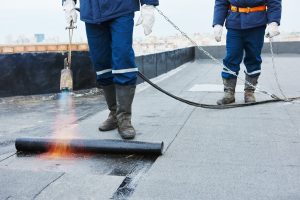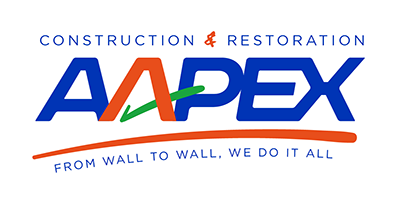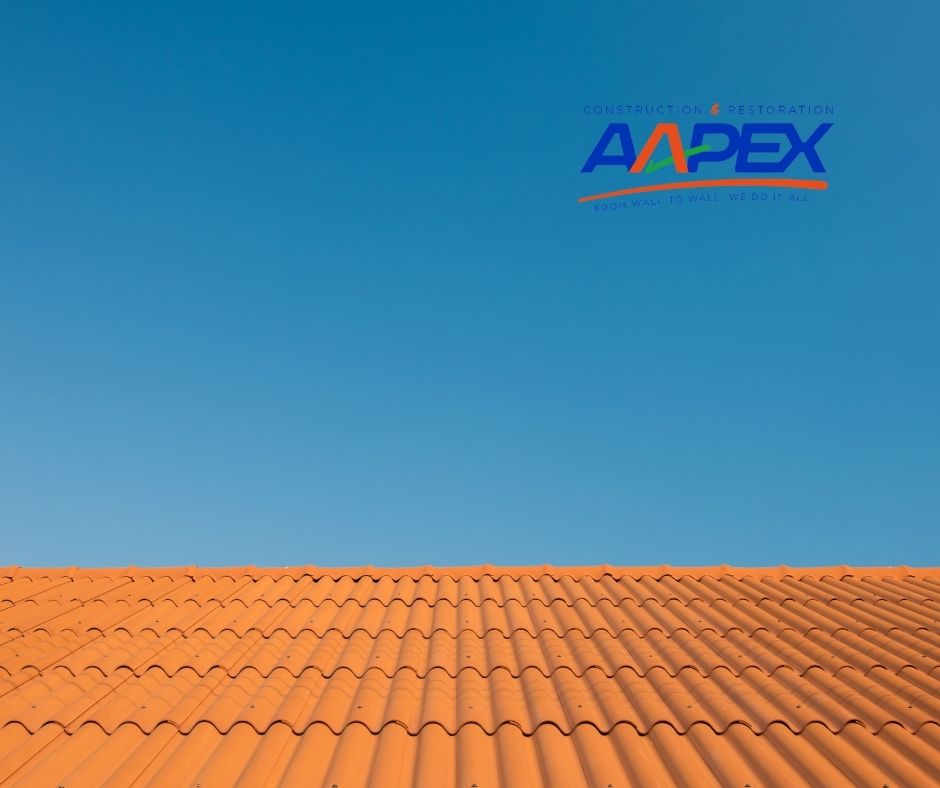Here in temperate Northeast Ohio, we may not hear a lot about cool roofs, but in other areas of the U.S., especially in the south and southwest, cool roofs are often required for residential and commercial buildings. Designed to reflect more sunlight and absorb less heat, cool roofs help reduce building cooling costs in the summer and extend the life of the roofing material. While they are not required here in Northeast Ohio, homeowners may be wise to consider the benefits of installing a cool roof on their home.
What is a Cool Roof?

A cool roof is any roofing system that has been designed to have a high solar reflectance (albedo) and a high thermal emittance, the ability to re-emit previously absorbed heat back into the air. The result is markedly cooler roof surface temperatures, which can mean drastically reduced cooling bills. During the hottest parts of the year, traditional roofs can see surface temperatures as high as 150-185ºF, hot enough to literally cook an egg on its surface. A cool roof, however, will see temperatures 50-60ºF cooler than that. The concept of a cool roof is similar to the idea of wearing a white tee shirt rather than a black one on a hot summer day. A cool roof is like a white tee-shirt for your home or business, reflecting as much as 80% of the sun’s rays to keep the building cooler.
What does that mean for the homeowner? A traditional roof acts like a heating coil sitting atop your home, with the area underneath it as a sauna that reaches 150ºF. Your A/C unit will have to work that much harder to keep the upper levels of your home a comfortable temperature, which means higher cooling costs and also a much more significant environmental impact.
Materials Used in a Cool Roof
While cool roofs often are lighter in color, they do not have to be white. For commercial buildings with flat or low-slope roofs, a reflective coating is often applied to the roofing surface. These cool roof coatings are often white or contain special reflective pigments that reflect the sunlight. The roofing materials for commercial buildings are rarely appropriate for use on high-slope residential roofs. The thick cool roof coating cannot practically be applied to these steep roofs. However, cool asphalt shingles are manufactured with a special coating of granules that reflect the sunlight, providing better reflectance and remittance. Many tile roofs are naturally reflective enough to already achieve cool roof standards, and they may be coated with a special surface treatment to increase their solar reflectance. Metal roofs, similarly, are already reflective enough to achieve high reflectance, but they are poor thermal emitters. A cool metal roof can be achieved, however, by painting the surface.
The Growing Trend of Cool Roofs

Here in Northeast Ohio, we are squarely located in Zone 5 of the ASHRAE Climate Zone Map. Cool roofs are prominent, in some cases required, in Zones 1-3, which includes most of the south and southwest. Traditional roofs can contribute to urban heat islands (UHIs), which are densely populated areas that are significantly warmer than the surrounding suburban or rural areas. The intense heat from the roofs warms the air as it flows over the surface, increasing the surrounding area’s temperature. Regulations concerning cool roof installation in certain regions of the U.S. help reduce these UHIs. While such regulations are not yet seen in Zones 4 and 5, the changing climate has many thinking cool roofs should be installed in these areas. New York City, the northernmost city in Zone 4, has seen record breaking summer heat in the past few years, and Northeast Ohio is seeing record highs during winter and summer. With these changes, many building associations are considering the benefits of cool roofs installed in Zones 4 and 5.
Pros & Cons of a Cool Roof

The benefits of installing a cool roof are easy to see, most notably reducing the cooling costs seen during the summer as well as increasing the life of your roofing materials. The result is a reduction in air pollution as well, as less energy will be needed to cool your home. Because of the decreased strain on your A/C unit, its lifespan is also increased. Lastly, cool roofs make the interior temperature (and exterior temperature in densely populated areas) more comfortable. In addition to this, small businesses may be eligible for a tax credit for installing a more energy efficient roof.
 While the benefits of cool roofs are difficult to ignore, there are some drawbacks as well. Some suggest that cool roofs lead to higher heating costs in the winter and offer the guideline that cool roofs should only be used in climates where the cooling days (days when you need to use the A/C to keep your home comfortable) outweigh the heating days. Here in Northeast Ohio, it is a pretty even split, and any added heating cost required in winter is far outweighed by the cost savings seen during the summer. Additionally, cool roofs may be more prone to condensation when installed in warm, humid climates, which can lead to mold or algae growth. However, this can be combated with preventative chemical treatments.
While the benefits of cool roofs are difficult to ignore, there are some drawbacks as well. Some suggest that cool roofs lead to higher heating costs in the winter and offer the guideline that cool roofs should only be used in climates where the cooling days (days when you need to use the A/C to keep your home comfortable) outweigh the heating days. Here in Northeast Ohio, it is a pretty even split, and any added heating cost required in winter is far outweighed by the cost savings seen during the summer. Additionally, cool roofs may be more prone to condensation when installed in warm, humid climates, which can lead to mold or algae growth. However, this can be combated with preventative chemical treatments.
Do you think your home or business might be well-suited for a cool roof? Contact us today to schedule a consultation.
Related Articles
Residential v. Commercial Roofs: The Main Differences
Built to Last: The Life Expectancy of 5 Popular Roofing Materials


